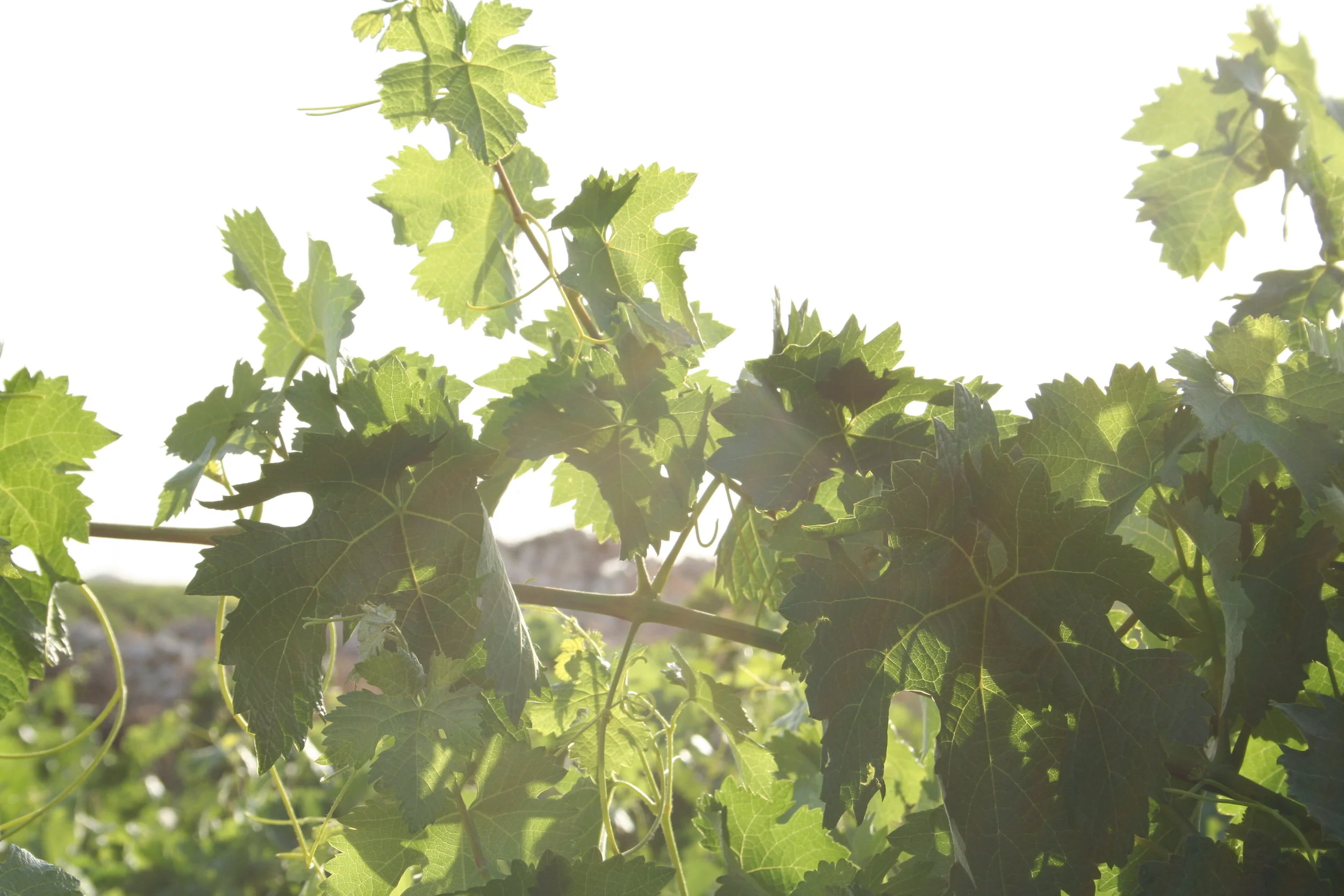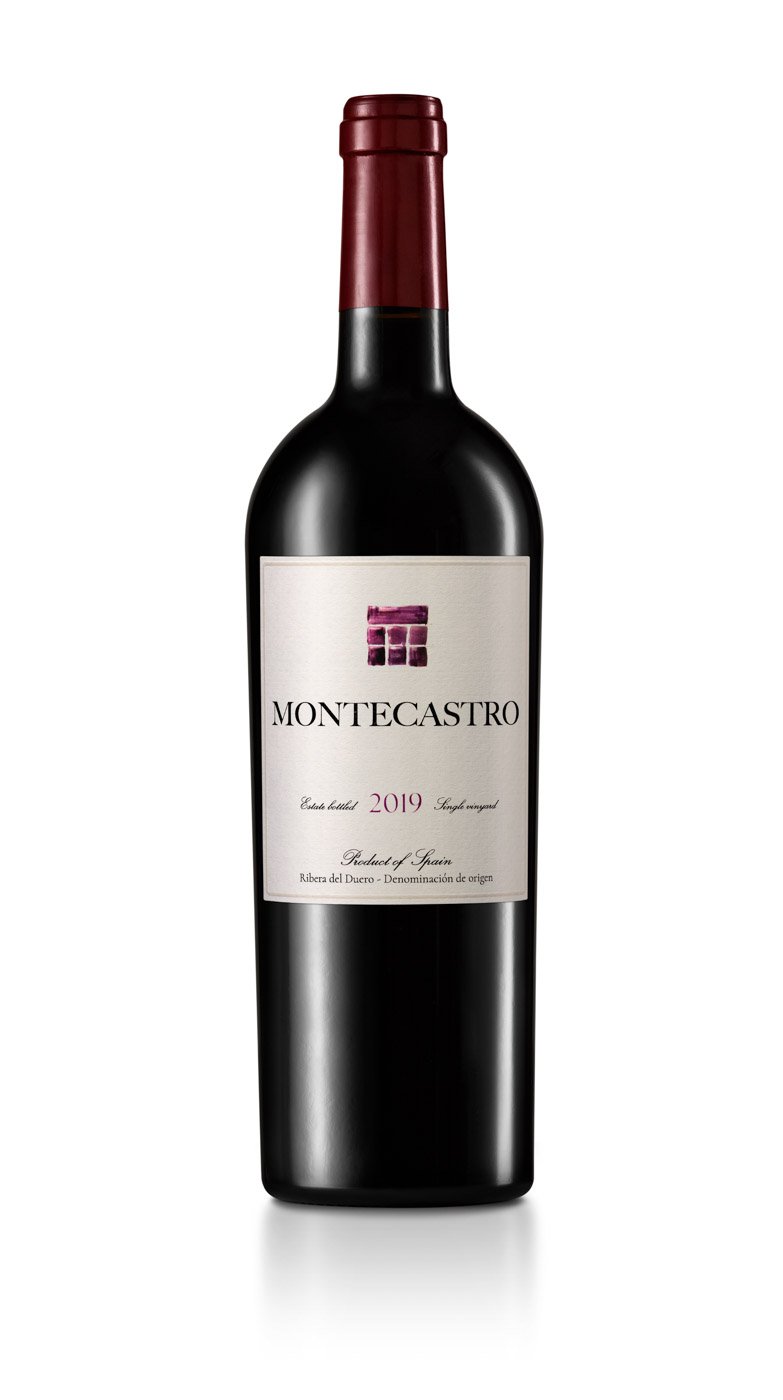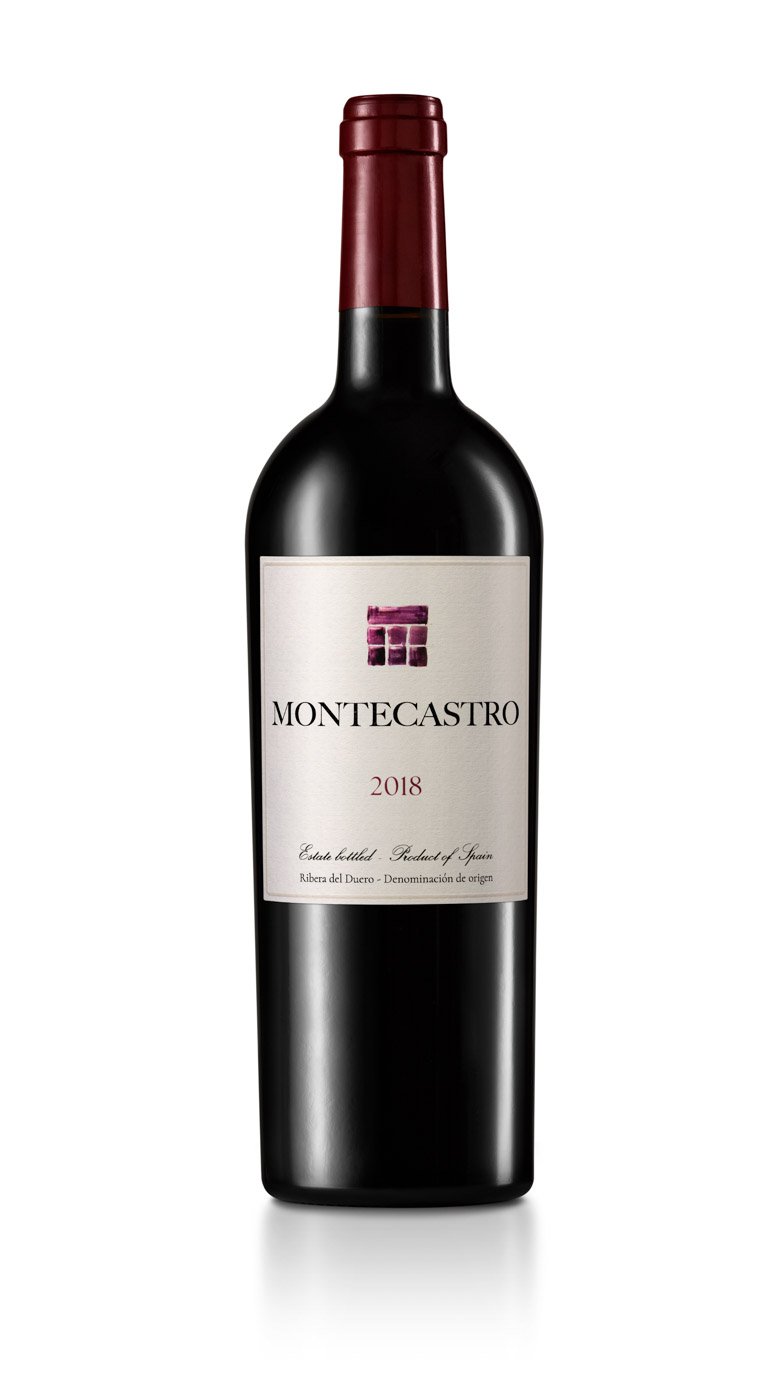








Welcome
Welcome
WINE PASSION
The idea arose in 2000 from the passion that some friends had for wine. They became partners in order to make a dream come true: plant vineyards at the heart of the Ribera del Duero, create a state-of-the-art winery and produce high quality wines.
Bertrand Erhard, a French winemaker who perfectly understood the philosophy of the project, joined the group.
In 2002, 27 hectares of vineyards were planted in five different estates. The idea was to make a wine from the land from start to finish. The vineyards were planted while the Winery was being built.
In 2012, Bodegas Hacienda Monasterio became a shareholder of Montecastro, taking on the technical, wine-making and sales management.
In 2015, the first vintage created by the Hacienda Monasterio team, Montecastro Vintage 2012, was placed on the market.

Soil and climate
Soil and climate
FRESH SOIL
Bodegas MONTECASTRO has 27 hectares located in the province of Valladolid (Castrillo de Duero) bordering closer to Burgos and one of the highest altitudes of Valladolid and even the Ribera del Duero. Its vineyards are found between 860 and 923 meters above sea level, located on the coordinates 41º 35´44. 53” N4º 02´01.92” O.

Ecological Viticulture
Ecological Viticulture
Varieties and soil system
The Montecastro vineyard is divided into 3 varieties, TINTO FINO, CABERNET SAUVIGNON AND MERLOT, and into 2 well systems TRELLIS AND GOBLET.
The planting pattern is 2.5 X 1. This means a plant density of 4,000 vines per hectare. This high density allows us to obtain a low production per plant which in turn increases the quality of the grape. The whole surface area of the crops is not irrigated. It belongs to the municipal districts of Olmos and Castrillo de Duero. The plantation area is moorland area located 923 metres high. This makes it a very cool area. The land is “light” soil which is mainly rocky. There are also plots in river bed and pit areas with slightly “harder” soil. This means that not all the vineyard can be worked in the same way given that the strength and potential are very different.
The vineyard is not registered as an Organic Vineyard, but its cultivation practices are. The treatment of weeds is exclusively mechanical, with tractors or by hand with workers, and no weed-killers or chemical products are used.
Regarding plant health, we work hard on the natural balance of the plant so as to not have an excess of vigour that could result in a fungal overgrowth produced by excessive vegetation or a weakening of the plant which would make it more vulnerable to a pest infestation or primarily to wood fungi. Thus, green practices and, above all, the individual treatment of each plot and plant are very important, observing the plant's needs and acting accordingly.

Winery
Winery
OUR WINERY
It is a modern winery, committed to organic farming. It was designed and built in 2002 by the prestigious architect Roberto Valle, in harmony with the winery’s surroundings, as he did in the Peñafiel Castle for the wine museum. It combines various elements from the area: white stone from the moor, weathering steel, glass, concrete and wood.
We use cutting-edge technology and a know-how which has been passed on from generation to generation. The vintage is completed manually in boxes of 12 kg. The grape reaches the warehouse without having been crushed, using conveyor belts.
The grapes are left macerating in cold for 15 days in the thermoregulated concrete tanks, with spontaneous fermentation and final maceration.
They are later placed into new and semi-new Bordeaux barrels of 100% French, leaving the wine on its lees for six months. The wine remains in the barrels for 16 to 20 months, depending on the vintage, and then another 3 or 4 months in concrete tanks, where it blends before being bottled.

Vinification
Vinification
SELECTIVE AND NATURAL PROCESS
The vinification process at MONTECASTRO is simple, selective and natural. However, we try to experiment with modern production techniques that respect the grape while enhancing aromas, maintaining the quality and balance, and particularly protecting the tannins.
The production warehouse has 16 concrete tanks, with a minimum capacity of 5,000 litres and a maximum of 16,000 litres. It also has 5 small stainless steel tanks to carry out controlled microvinification. All of the tanks have a hot-cold temperature control. The main reason we chose concrete tanks was because they maintain the temperatures well and they do not have static charge: this leads to having very pure wines. Moreover, these tanks, once the vinification is completed, are a great ageing element, constantly combined with the barrels.

Our wines
Our wines
OUR WINES
2019
Viticulture Grape varieties: Grape varieties: 95% Tinto Fino-5% Merlot Yield: 30hl/ha after selection
Winemaking process Stripping: Grape procedure: 100% de-stemming Maceration time: 20 days
Barrel ageing: 16 months in Allier oak barrels
Alcohol content: 15%
Tasting - Notes: Bright violet ruby color.
The nose is very expressive, with a great intensity of red fruit, with a mineral touch, very well-integrated with the wood tannin.
The mouth is fresh and fruity with a very characteristic tannin of the Tinta del Pais grape variety. The structure is very well balanced with the fruit and acidity.
The wine shows a medium-long persistence structure with a noble and pleasant post-taste.
2018
Viticulture Grape varieties: Grape varieties: 95% Tinto Fino-5%Cabernet-Sauvignon-5% Merlot
Yield: 30hl/ha after selection
Winemaking process Stripping: Grape procedure: 90% de-stemming/ 10% with stems Maceration time: 25 days
Barrel ageing: 3 months in concrete tanks followed by 16 months in Allier oak barrels
Alcohol content: 15%
Tasting - Notes: Very bright ruby color.
The nose reflects aromas of red fruit, floral and mineral notes and a touch of liquorice very well-integrated with the tertiary aromas of its barrel aging.
The mouth shows an harmonious and fresh structure with fine and nervous tannins. The mouth is pleasant, unctuous and very elegant with a fragant and fruity final sensation.
The good balance will allow a good aging in the bottle and the pleasant sensations will allow also to enjoy the wine for an inmediate consumption.
2017
Viticulture Grape varieties: 95% Tinto Fino-5%Cabernet-Sauvignon
Winemaking process Stripping: Grape procedure: 80% de-stemming/ 20% with stems Maceration time: 25 days
Barrel ageing: 16 months in Allier oak barrels
Alcohol content: 15%
Tasting - Notes: Bright ruby red color.
The nose, attractive and complex, reflects a great aromatic complexity, with intense notes of black berries and red fruits, spicy and balsamic touches.
The mouth is soft and silky. The wine has an harmonious structure of red fruit in perfect balance with the acidity and wood tannins.
Great and long aromatic persistence of red fruit and floral and complex notes.
Its balanced, firm and elegant structure shows a good and promising development in the bottle.
2016
Viticulture Grape varieties: Grape varieties: 94% Tinto Fino - 6% Cabernet Sauvignon. Yield: 30hl/ha después de selección
Winemaking process Stripping: Grape procedure: 80% de-stemming-20%with stems Maceration process: prefermentative long and cold Maceration time: 25 days
Barrel ageing: 17 months
Alcohol content: 15%
Tasting - Notes: Bright ruby red color.
The Nose is starring some aromas of red fruit, with small touches of black licorice and balsamic aromas of eucalyptus. Very aromatic nose in perfect harmony with the subtle aromas provided by aging in Barrel.
The mouth is soft and silky giving way to a balanced structure marked by a very integrated acidity whose presence provides freshness and persistence, with a red fruit and mineral aftertaste. Very fine, long and elegant mouth.
Balance, finesse and freshness are the great characteristics of this wine with a great aging potential.
2015
Viticulture Grape varieties: Grape varieties: 94% Tinto Fino - 6% Cabernet Sauvignon. Yield: 30hl/ha después de selección
Winemaking process Stripping: Grape procedure: 80% de-stemming-20%with stems Maceration process: prefermentative long and cold Maceration time: 24 days. Barrel ageing: 17 months. Alcohol content: 15%
Tasting - Notes: Dark red and shiny color.
The nose is mineral with notes of fresh fruit, mint and eucalyptus with a touch of roasting very well integrated with its aging in barrels. Great volume in the mouth, fresh and mineral in perfect harmony with the fruit. The entire palate remains soft, expressive and persistent. Its rich structure and finesse show a great aging potential in bottle.
2014
Viticulture Grape varieties: Grape varieties: 94% Tinto Fino - 6% Cabernet Sauvignon. Yield: 30hl/ha después de selección
Winemaking process Stripping: Grape procedure: 50% de-stemming-50%with stems Maceration process: prefermentative long and cold Maceration time: 26 days
Barrel ageing: 18 months (2 Months in concrete tanks). Alcohol content: 15%
Tasting - Notes: Montecastro 2014 has a brillant ruby color.
Sweet aromas of raspberries, cherry jam, licorice and caramel predomínate the nose.
The wine has a great fruit, an opulent texture, medium to full body and a very seductive fleshy mouth sensation.
Very integrated and pleasant; starring the freshness and its balanced structure. Its tannins-acidity balance predict a great development in bottle.
2013
Viticulture Grape varieties: Grape varieties: 94% Tinto Fino - 6% Cabernet Sauvignon. Yield: 30hl/ha después de selección
Winemaking process Stripping: Grape procedure: 90% de-stemming-10%with stems Maceration process: prefermentative long and cold Maceration time: 20 days
Barrel ageing: 21 months (3 Months in concrete tanks). Alcohol content: 15%
Tasting - Notes: Ruby red color.
The nose is fruity and complex, with notes of cospe and a mineral background due to its calcareous sedimentary origin.
The mouth is fruity and shows a good acidity,tannin, fruit balance, with a fresh and persistent finish.
Pleasant wine with great prospects for development in the bottle.

Team
Team
our wine's heart
Chrystelle Moran
Born in Bordeaux (France). After completing her degree in Economics and International Trade at the University of Lille III (France), she moved to Spain and began her professional career in the wine industry. In 2009, she started working at Bodegas Hacienda Monasterio as Sales Manager for the Spanish market. In addition to her duties at Bodegas Hacienda Monasterio, in 2015, Chrystelle took on the commercial development of Bodegas Montecastro in the Spanish market.
Carlos del Río
He holds a Degree in Business Management and Administration from CUNEF University. While carrying out his studies, he completed an internship at Hacienda Monasterio in the United States and South America. Upon completing his studies, he went to Chile and began working as Sales Manager at Viña Koyle. At the beginning of 2015, he returned from Chile and began working as Sales Manager at Bodegas Montecastro.
VICENTE ABETE
Born in Pamplona in 1970 After studying agricultural engineering and oenology in Madrid, he decided to travel to Bordeaux to carry out a stage in a winery in Saint-Emilion. In 1993 he began to work at the D.O. Navarra until 1998, when he moved to the D.O. Ribera del Duero to pursue his professional career. In 2019 he joined Hacienda Monasterio and Bodegas Montecastro as head of viticulture.
CARLOS DE LA FUENTE MARTÍN
Born in Valbuena de Duero, in 1969, he began working with Peter Sisseck at Hacienda Monasterio in 1991. He continues working here as the deputy oenologist.
He has a Masters in Viticulture, Oenology and Winery Management and has taken a variety of courses on researching the world of wine and working in vineyards, particularly on soils (INRA Montpellier 2000). His whole career has been focused on the framework of Ribera de Duero, working together with Peter Sisseck, in viticulture, winery and tasting.
Francisco Núñez Moreno
Born in Zamora in 1979. He is a technical agricultural engineer with a postgraduate degree in technical Oenology. He is currently studying oenology and viticulture at INEA university college. From 2000 to 2005, he worked as technical manager at the Quinta de la Quietud S.L. winery (Toro DO). In 2006, he began working at Bodegas Montecastro and continues to do so now.

MONTECASTRO
VA-130, 47318 , Castrillo de Duero
VALLADOLID
SPAIN
For any other questions or doubts, please, use the form on the right.












